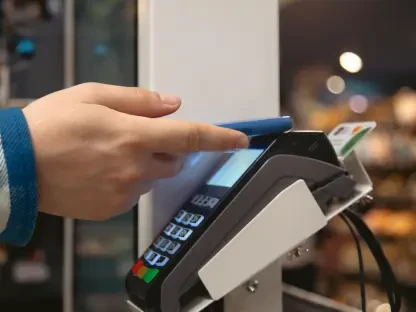Setting the Stage: The Urgency of Creative Innovation in Digital Ads
In today’s fast-paced digital landscape of 2025, capturing consumer attention remains a daunting challenge for advertisers, with studies showing that the average person encounters over 5,000 ad impressions daily, yet recalls fewer than 1%. This staggering statistic underscores a critical pain point: traditional ad formats are losing their edge in an oversaturated market. As brands scramble to stand out, the partnership between Yahoo DSP, a dominant demand-side platform, and TripleLift, a creative supply-side platform (SSP), emerges as a game-changer, introducing cutting-edge native and Connected TV (CTV) advertising solutions.
This market analysis aims to dissect the strategic collaboration between these two industry leaders, focusing on how their innovations address the pressing need for engagement and relevance. By exploring the intersection of advanced targeting and high-impact creative formats, the discussion highlights a pivotal shift toward user-centric advertising. The importance of this analysis lies in its potential to guide advertisers through a rapidly evolving ecosystem where attention is the ultimate currency.
The following sections delve into current trends, data-driven insights, and future projections for native and CTV advertising. From specialty ad formats to dynamic retail media tools, this examination offers a comprehensive look at how the market is adapting to consumer behavior. Advertisers seeking to navigate these changes will find actionable strategies embedded within the broader industry context, setting the stage for informed decision-making.
Market Trends and Innovations: Decoding the Partnership’s Impact
Native Advertising Redefined: Engagement Metrics Take Center Stage
Native advertising has evolved into a cornerstone of digital marketing, blending seamlessly with publisher content to combat ad fatigue. The collaboration between Yahoo DSP and TripleLift pushes this format further with specialty options like scroll, carousel, and cinemagraph ads. Eye-tracking research spanning recent years reveals that these formats achieve engagement rates six times higher than traditional banner ads, with cinemagraphs—a blend of static imagery and subtle motion—driving purchase intent up by a remarkable 6.4 times compared to industry standards.
This surge in engagement reflects a broader market trend toward prioritizing creative quality over sheer volume. Advertisers are increasingly recognizing that non-disruptive, visually captivating ads resonate more deeply with audiences who have grown wary of aggressive tactics. However, scaling such creative formats across diverse campaigns without losing their unique appeal remains a hurdle, as does the risk of market saturation if adoption becomes too widespread.
Beyond these challenges, the data suggests a clear opportunity for brands to differentiate themselves by investing in native formats that prioritize user experience. As consumer expectations for seamless integration rise, platforms offering robust creative solutions are likely to dominate market share. This partnership positions itself at the forefront of this shift, providing advertisers with tools to craft campaigns that feel less like interruptions and more like value additions.
CTV Advertising: Pause Ads as a Market Disruptor
The Connected TV (CTV) sector continues to experience explosive growth, with streaming platforms becoming a primary channel for brand messaging. Within this space, the introduction of CTV Pause Ads by Yahoo DSP and TripleLift marks a significant innovation, capitalizing on moments of heightened viewer attention during content pauses. These ads, offered at no additional cost, boast a 34% ad recall rate, far surpassing standard video formats and highlighting their potential to transform streaming advertising.
Unlike traditional CTV ads, which often struggle against viewer multitasking or skipping, Pause Ads leverage natural breakpoints to deliver impactful messaging. This approach aligns with a market shift toward contextually relevant advertising, where timing and placement are as critical as content. Yet, the challenge lies in maintaining relevance during these pauses to avoid viewer irritation, alongside rising competition for premium slots as CTV adoption expands.
Looking at market dynamics, this format taps into the growing demand for non-intrusive yet memorable ad experiences. With streaming viewership dominating household entertainment, innovations like Pause Ads are poised to become industry standards. Brands that act quickly to integrate such tools into their strategies could secure a competitive edge, reshaping how advertising budgets are allocated in this booming sector.
Retail Media Precision: Dynamic Creative Fuels Conversion Growth
Another key trend amplified by this partnership is the rise of retail media, particularly through SKU-level dynamic creative formats. These allow real-time updates to showcase specific products tailored to consumer intent, enhancing relevance in e-commerce campaigns. Dependent on catalog and asset availability, this precision targeting combines TripleLift’s creative expertise with Yahoo DSP’s data capabilities, creating a powerful tool for retailers aiming to drive conversions.
Market analysis indicates that dynamic creative addresses a critical need for personalization at scale, a demand fueled by increasingly sophisticated consumer journeys. However, execution requires robust data infrastructure, which may pose barriers for smaller advertisers lacking resources. Additionally, maintaining brand consistency across rapidly updating creatives presents an ongoing challenge in crowded retail environments.
Despite these obstacles, the potential for SKU-level advertising to boost ROI is undeniable, particularly as e-commerce continues to capture a larger share of consumer spending. The market is trending toward hyper-relevant ad experiences, and platforms that streamline such capabilities are likely to attract significant investment. This collaboration exemplifies how technology can bridge creativity and precision, offering a blueprint for future retail media strategies.
Future Projections: Navigating the Evolving Ad Landscape
Technological Advancements Shaping Creative Formats
Looking ahead, the fusion of creative technology and data-driven targeting is expected to deepen, with artificial intelligence and machine learning playing larger roles in optimizing ad formats dynamically. From 2025 to 2027, projections suggest a rapid increase in automated creative adjustments, enabling real-time personalization that adapts to individual viewer preferences. This trend will likely enhance the effectiveness of native and CTV ads, further blurring the line between content and advertising.
Regulatory changes, particularly around data privacy, are anticipated to influence how targeting evolves, pushing the market toward contextual advertising strategies. Native ads, with their inherent ability to integrate seamlessly into environments, stand to benefit from this shift, offering a compliant yet impactful solution. Economic factors, such as increased ad spend on performance-driven formats, are also expected to accelerate the adoption of high-engagement tools like those offered through this partnership.
Speculative insights point to immersive formats—think interactive native ads or augmented reality in CTV—as the next frontier. As consumer demand for engaging experiences grows, platforms that innovate proactively will maintain leadership positions. The market is on the cusp of a transformation where advertising becomes less about interruption and more about interaction, a vision already taking shape through current innovations.
Market Share and Competitive Dynamics
Analyzing competitive dynamics, partnerships like this one are set to redefine market share distribution in digital advertising. By combining Yahoo DSP’s targeting prowess with TripleLift’s creative inventory, the collaboration creates a formidable offering that challenges competitors to elevate their own solutions. Projections indicate that platforms prioritizing user engagement over traditional metrics like reach alone will capture a larger portion of ad budgets over the next few years.
Smaller players may struggle to match the scale and integration offered by such alliances, potentially leading to industry consolidation. Conversely, this could spur niche innovations as competitors seek differentiation through specialized formats or vertical-specific solutions. The market is likely to see a bifurcated landscape, with major partnerships dominating broad strategies and agile startups carving out targeted opportunities.
Consumer behavior will ultimately dictate the pace of these changes, with attention spans continuing to shrink and expectations for relevance rising. Advertisers who align with platforms offering both creative and analytical strengths will be best positioned to navigate this complexity. The trajectory suggests a future where strategic collaborations, rather than standalone platforms, drive the most significant market shifts.
Reflecting on the Analysis: Strategic Implications and Next Steps
Reflecting on the insights unearthed, the partnership between Yahoo DSP and TripleLift stood as a transformative force in the digital advertising realm during this period. The emphasis on creative quality, evidenced by dramatic engagement uplifts in native formats and superior recall rates in CTV Pause Ads, redefined campaign priorities. This collaboration highlighted how merging advanced targeting with innovative formats could address the critical challenge of fleeting consumer attention.
The market analysis also revealed the growing importance of precision in retail media, where dynamic creative offered a pathway to heightened relevance. Operational efficiencies, such as streamlined workflows, further empowered advertisers to adopt these tools without steep learning curves. These findings pointed to a broader industry pivot toward user-first strategies that balanced creativity with measurable outcomes.
Looking back, the strategic implications were clear: advertisers needed to prioritize high-impact formats and invest in platforms that bridged technology and creativity. Moving forward from that time, the recommendation was to test emerging tools like cinemagraphs and Pause Ads in pilot campaigns, while retail brands were encouraged to explore SKU-level targeting to sharpen conversion focus. Building alliances with integrated platforms became essential to stay competitive, ensuring access to both inventory and expertise in an ever-shifting digital landscape.









